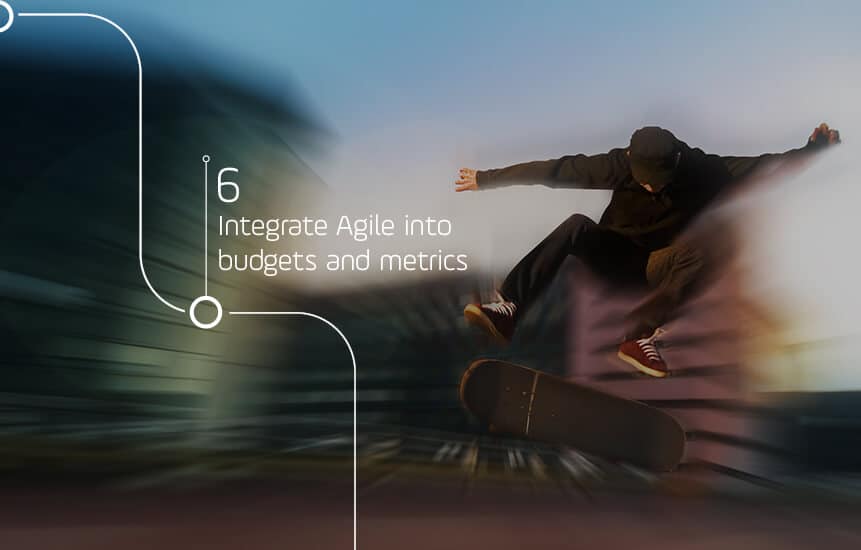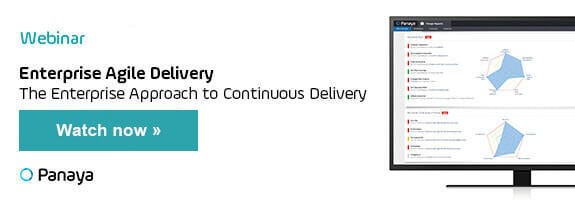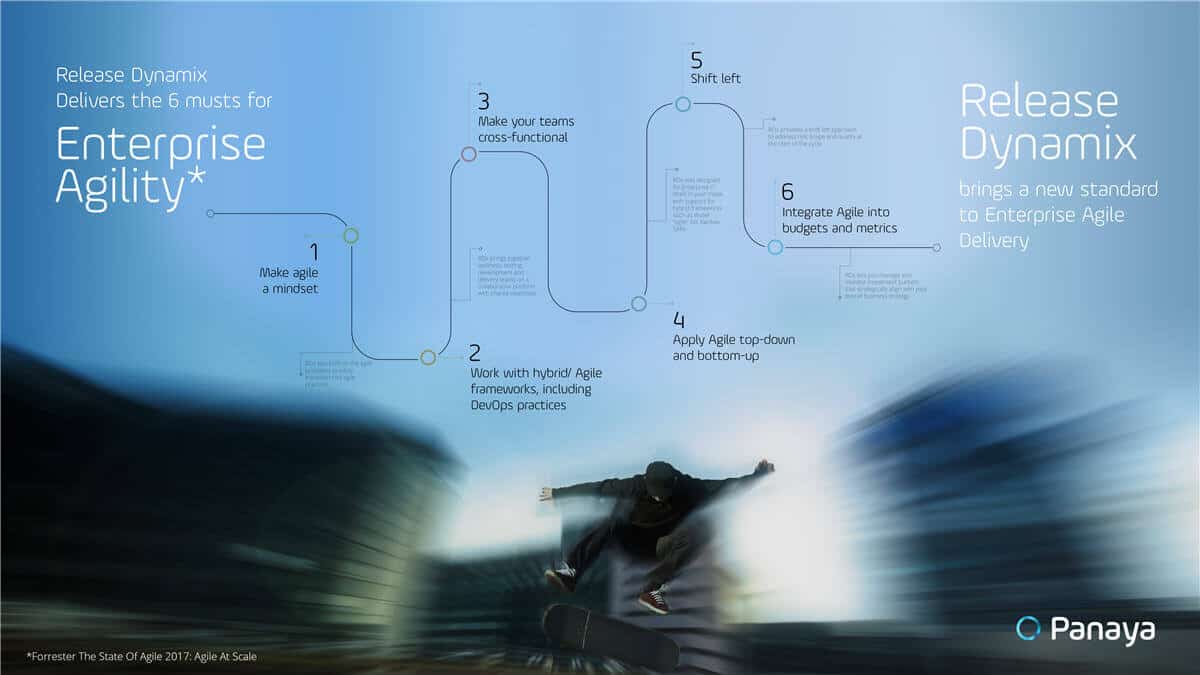Table of Content
Enterprise Agile Delivery – Why?
Today, enterprises across the globe are on a journey toward agile and DevOps. Customer experience is at the heart of the enterprise journey toward digital, and Agile is the answer to getting customers what they want – and how they want it. According to Forrester, Agile is now more important than ever because when customer experience improves – revenue will grow.
The problem, however, is getting Agile right. In 2017, a Forrester survey found that 40% of ISVs said to have more than 75% of their teams working in Agile as opposed to only 24% of enterprises. So where is the gap?
Delivering Business Value Faster: The Path of The Enterprise
To deliver change quickly, you need to use an Agile delivery solution which is designed especially for the needs of the Enterprise. The Forrester report, The State of Agile 2017: Agile at Scale, outlines the key musts for enterprise agility. Designed for Enterprise Agile Delivery, Panaya Release Dynamix, answers each of these needs so that you can quickly and safely deliver your software changes.
1. Make Agile a Mindset
When we talk about Agile, we’re talking about collaboration, communication, transparency, and delivering business value over rigid deadlines. At the end of the day, this is a mindset change which means getting rid of old practices and embracing new working methods. Designed for enterprise IT, RDx was built on Agile principles to enable a smooth transition into Agile practices as you manage changing priorities. What differentiates RDx is that it supports cultural change by not only transitioning the methodology but also by engaging relevant business and IT stakeholders throughout the transition.
2. Work with Hybrid/Agile Frameworks, Including DevOps Practices
It’s common practice to adopt a gradual approach toward Agile by mixing Agile and waterfall methodologies together. To move faster, it’s recommended to apply lean/Agile principles from strategic planning, through working in Agile dev teams. RDx supports this by enabling teams to work in hybrid frameworks such as Water “Agile” fall, Kanban, SAFe. With RDx, teams simplify delivery processes and backlogs for complex demand streams by planning and managing iterations and releases as they gain visibility into pipeline activities. As a result, it’s simple to monitor progress with a complete, real-time view into features, stories and task breakdowns with out of the box reporting and dashboards for development, testing and release progress.
3. Make Your Teams Cross-Functional
Setting up cross-functional teams is about bringing together business, testing, development and delivery teams on a collaborative platform with connected activities and workflows that focus on the same objective. But what’s crucial for making this work is collaboration and communication. RDx makes this happen with built-in collaboration features, automated coordination and communication – all within a single platform – ensuring teams always stay in sync and streamline release cycles. Built-in broadcasting ensures immediate action to mitigate risk while automatic notifications and handover of steps to the next user eliminates idle time, relieves workload bottlenecks and ensures optimal workflows and sequences.
4. Apply Agile top-down and bottom-up
As Agile is a mindset change, it is imperative that it is implemented across all levels of the organization. However, applying Agile top-down and bottom-up means that teams need to move fast, cross-functionally from the product owner to the IT teams while providing continual feedback in short release cycles, and most importantly – in a transparent environment. RDx simplifies this process by bringing together business, testing, development and delivery teams in a single collaborative platform. With shared objectives, teams have complete visibility into the entire delivery toolchain with real-time monitoring and reporting as well as collaborative functionalities for increased communication.
5. Shift Left – For Continuous Testing
Shifting testing and quality assurance activities earlier in the development lifecycle is complex, requires additional skill-set and team reorgs, but Agile and DevOps can’t be completed without it. RDx provides a shift left approach to address risk, scope and quality from the very start of the cycle. With impact analysis, you can ensure your business changes, customizations or custom development from the start. Code Quality Review automatically combines coding and quality assurance into a single activity to eliminate code instability and increase developer efficiency. Ensure testers time is more effective with code that has already been defined as “ready to test” according to your organizational standards. With risk-based testing gain a clear and accurate view so you know you are always testing the right things. Visualize all areas of risk for each stakeholder via a risk cockpit that identifies low, medium, and high risk to status of development, code quality, test planning coverage, change risk, test execution, defects closure and overall requirements completion.
6. Integrate Agile into budgets and metrics
The Achilles heel of the organization, when it comes to changes in Finance and budget codes, the best approach here is to start small. Integrate Agile slowly by making budgets more transparent and reduce bureaucracies for quicker approval flow. With RDx, manage and monitor investment buckets that strategically align with your overall business strategy, to ensure you gain the greatest value for your spend.
Release Dynamix brings a new standard to Enterprise Agile Delivery. Take a proactive approach to change delivery with real-time insights and a multidimensional view into impact and risk for data-based decision making to know you are ready for go-live. To learn more about Agile at scale, download the Forrester report, The State of Agile 2017: Agile at Scale.



